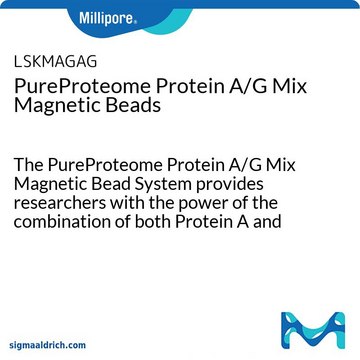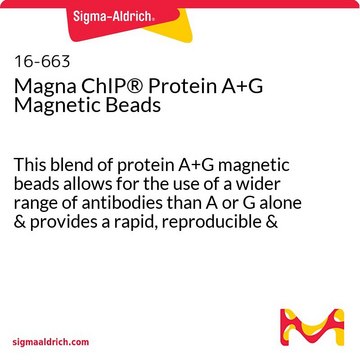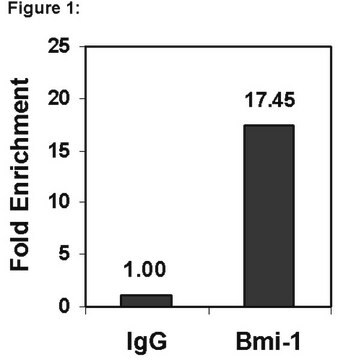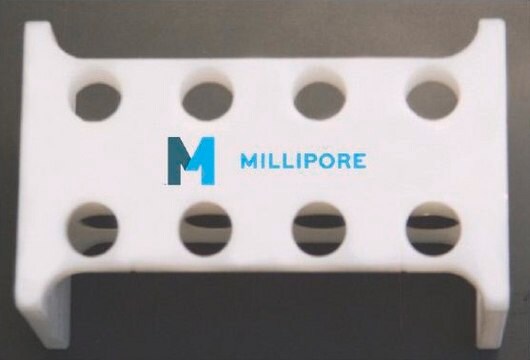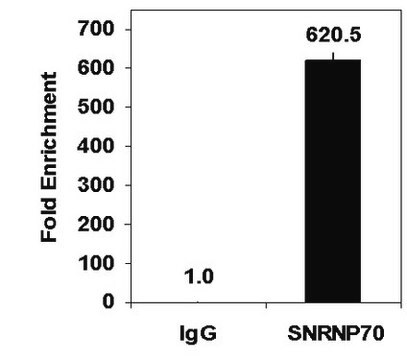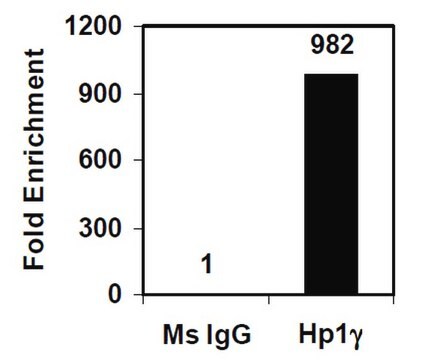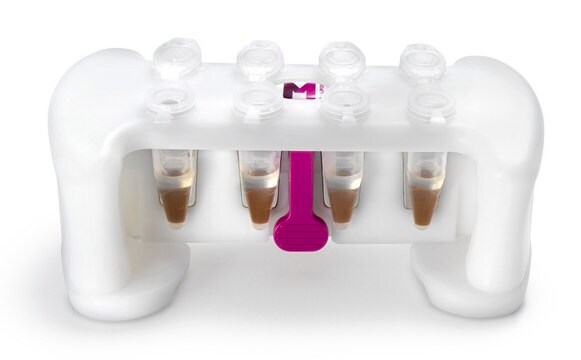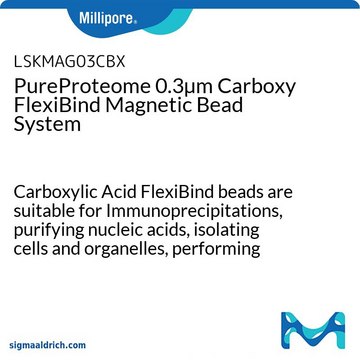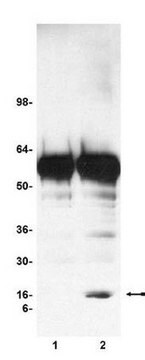16-661
Magna ChIP® Protein A Magnetic Beads
Recombinant Protein A covalently bound to magnetic beads for use in chromatin immunoprecipitations (ChIP assays). These protein A beads provide users a more rapid, reproducible & efficient reagent for collecting immunocomplexes vs. agarose beads.
Synonym(s):
ChIP magnetic beads, ChIP magnetic A beads, Magnetic Chromatin Immunoprecipitation
Sign Into View Organizational & Contract Pricing
All Photos(3)
About This Item
UNSPSC Code:
41105507
eCl@ss:
32160405
NACRES:
NA.52
Recommended Products
Quality Level
packaging
pkg of 1 mL
manufacturer/tradename
Magna ChIP®
storage condition
do not freeze
particle size
~3 μm
shipped in
wet ice
storage temp.
2-8°C
Related Categories
General description
Recombinant protein A covalently bound to magnetic beads. These beads provide users a rapid, reproducible and efficient reagent for collecting immunocomplexes for chromatin immunoprecipitations (ChIP) assays. Compared with conventional protein A agarose beads, protein A magnetic beads significantly reduce the handling time and mechanical stress on target immunocomplexes.
Application
Research Category
Epigenetics & Nuclear Function
Epigenetics & Nuclear Function
Use 20 µL of bead suspension per ChIP application. Includes sufficient reagents for 50 precipitation reactions. Disperse beads thoroughly before pipetting by rapid vortex.
Used to detect/quantify: Protein A
Quality
Routinely evaluated by Chromatin immunoprecipitation (ChIP) using HeLa nuclear extracts and the Magna ChIP® A Kit (Cat. #17-610).
Physical form
Liquid suspension. Supplied as magnetic bead slurry in phosphate buffered saline, pH 7.4, containing 0.01% Tween®-20 and 0.09% sodium azide.
Storage and Stability
Stable for 1 year at 2-8°C from date of shipment. Do Not Freeze.
Legal Information
MAGNA CHIP is a registered trademark of Merck KGaA, Darmstadt, Germany
TWEEN is a registered trademark of Croda International PLC
Disclaimer
Unless otherwise stated in our catalog or other company documentation accompanying the product(s), our products are intended for research use only and are not to be used for any other purpose, which includes but is not limited to, unauthorized commercial uses, in vitro diagnostic uses, ex vivo or in vivo therapeutic uses or any type of consumption or application to humans or animals.
Storage Class Code
12 - Non Combustible Liquids
WGK
WGK 2
Flash Point(F)
Not applicable
Flash Point(C)
Not applicable
Certificates of Analysis (COA)
Search for Certificates of Analysis (COA) by entering the products Lot/Batch Number. Lot and Batch Numbers can be found on a product’s label following the words ‘Lot’ or ‘Batch’.
Already Own This Product?
Find documentation for the products that you have recently purchased in the Document Library.
Customers Also Viewed
Distinct roles for Sp1 and E2F sites in the growth/cell cycle regulation of the DHFR promoter.
Jensen, D E, et al.
Journal of Cellular Biochemistry, 67, 24-31 (1997)
Gerda Lagger et al.
Molecular and cellular biology, 23(8), 2669-2679 (2003-04-01)
The cyclin-dependent kinase inhibitor p21/WAF1/CIP1 is an important regulator of cell cycle progression, senescence, and differentiation. Genotoxic stress leads to activation of the tumor suppressor p53 and subsequently to induction of p21 expression. Here we show that the tumor suppressor
Malay Choudhury et al.
FASEB journal : official publication of the Federation of American Societies for Experimental Biology, 34(7), 8920-8940 (2020-06-11)
In the current work we show that the profibrotic actions of TGF-β are mediated, at least in part, through a metabolic maladaptation in glutamine metabolism and how the inhibition of glutaminase 1 (GLS1) reverses pulmonary fibrosis. GLS1 was found to
Our team of scientists has experience in all areas of research including Life Science, Material Science, Chemical Synthesis, Chromatography, Analytical and many others.
Contact Technical Service